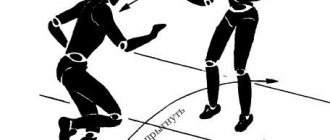World Games
- home
- World Games
The games section of the world's peoples contains the most famous and time-tested games. The games presented have a wide geography and an interesting history of origin. Games of the peoples of the world help us better understand, and perhaps take a different look at, other nations. Games of the peoples of the world reflect the culture and identity of the people. It can be noted that among one people, active, team games predominate, while among another, board, logical games predominate. You can also find very similar games among different nations, but with different names.
Auto racing is a German game for two or more people. To play, you need to take two toy cars, two wooden sticks and two long cords (about 6-9 m). Toy cars should be tied to cords. which, in turn, are tied to sticks. Wooden sticks should be held in the hands of two children. The essence of the game is to, on command, wind the cord around a stick as quickly as possible, thus pulling the car towards you.
Kagome
- This is a Japanese children's game. One of the children is chosen as a “demon”, he closes his eyes and sits down.
The rest of the children dance around him and sing a play song. When the song ends, the “demon” calls the name of the one who is standing behind him and, if the “demon” turned out to be right, this person replaces the “demon”.
This Japanese game can be played by 4 people or more. To do this, you need to draw a large lake with bays, islands and capes on the asphalt. Players choose one “stork” leader, and all other players become “storks”.
The “frogs” sit in the “water”, not having the right to get out to the “land”.
The “stork” must walk along the shore and try to catch the “frog”. The “stork” has the right to jump from “island” to “island”, but cannot enter the “water”. The last “frog” caught becomes a “stork”.
White Stick (Takzhikistan) can be played by more than 10 people. Participants must choose a leader according to the counting count, divide into 2 equal teams and choose a place for the white stick. Then the leader must quietly hide the wand, and the players must look for it. The one who finds the stick carries it to the chosen place, and at this time the players of the other team try to stop him. The wand can be given to your team members.
Argentine game for seven or more people. Before the game, the participants are divided into the driver “locomotive” and the rest of the players “cars”. On a large platform, players each “build a depot” for themselves, outlining a small circle.
In the middle of the platform there is a driver - a steam locomotive. He doesn't have his own depot. The driver goes from one player to another. Whoever he approaches follows him. This is how all the cars are assembled. The locomotive suddenly whistles, and everyone runs to the depot, including the locomotive. The player left without a seat becomes the driver of the locomotive.
A game from Burma played by at least six players with one ball or stone. Players line up at a distance of 30 - 40 cm from each other. Outstretched arms with open palms are held behind the back. One of the players stands behind them. He has a ball or pebble in his hand. Walking along the line, he pretends as if he wants to drop the ball into someone's palm. Players shouldn't look back. Finally he drops the ball into someone's hand. The player who received the ball suddenly breaks out of the line.
Neighbors to the right and left must catch him before he moves. But at the same time they do not have the right to leave the line. If they fail to capture him, he can return to his place and then the game continues. If he is caught, he changes places with the leader.
Statue
- Armenian game for 5 - 20 people.
Players are divided into catchers and runners. One catcher is assigned for every 5 people, and four catchers for every 20 people. As designated by the leader, the catchers go outside the field, and the runners freely position themselves on the site. At the signal, the catchers chase the other players, trying to catch one of them.
The caught person must immediately stop and freeze in place in the position in which he was caught. Anyone who is frozen can be “released” by any player by touching him. The game ends when all players are caught. After this, new catchers are chosen and the game continues.
A runner who, by inertia, runs out of bounds is considered out of the game.
Pull out your handkerchief
is an Azerbaijani game played by 10 or more people.
Scarves are used as equipment. Two teams line up opposite each other at some distance. A line is drawn between them. Each person has a handkerchief or scarf tucked into the back of their belt. By lot, one of the teams becomes the driver. At the judge’s command, the children move forward (the drivers stand still), cross the line, and then the judge shouts: “Fire!” The players run back, and the opponents (drivers) try to catch up with them in order to pull the scarf from their belts. Then the teams change roles.
Shpen is a Belarusian game where a wooden pin is placed in the center of the field, the driver stands next to it, and around the rest of the players with bats in their hands.
Their task is to throw the bat and hit the peg so that it rolls as far from the center as possible. If one of the players succeeds and the peg rolls away, the driver must run up, take it and place it again in the center of the field. At this time, the players run for their bats and pick them up.
The driver, having installed the peg, must try to grab any of the bits, ahead of its owner. If he succeeds, he becomes a player, and the player who did not have time to return his bat becomes a driver. (Sticks flying into the peg can hit the driver, so he needs to be careful not to get hit by the bat).
An Italian game in which two teams are each placed at their own line at some distance from each other, with the leader standing in the middle. He holds a scarf and shouts out numbers. The players whose numbers he called run to him. The one who snatches the scarf from the leader and returns to his place first earns a point.
Peru
A Peruvian game in which players draw circle houses for themselves, and the driver remains “homeless.” Everyone shouts in unison “Kalabasa!” (Go home!) and scatter in their own circles. The “homeless man” turns to one of the players: “Are you selling eggs?” He replies: “I don’t, but maybe he’s selling,” and points to a friend, to whom the “homeless man” goes. In the meantime, the players must change places. If the driver manages to occupy someone else’s house, then he becomes its owner, and the one who remains outside the circle leads.
This is a Hungarian game in which players form a circle with a diameter not exceeding 10 m. The driver becomes the center of the circle. Players throw a small ball to each other. The driver tries to intercept him. At a convenient moment, any of the players can throw the ball at the driver.
If the driver fails to dodge the ball, he remains in the center of the circle.
If successful, he leaves the circle and the player who threw the ball takes his place.
If the driver manages to intercept the ball thrown at him, or during a pass from player to player, he can throw the ball at any player.
If it hits, the player will take his place; if not, he can continue to drive.
“Hag” translated from Uzbek means “crow”, “oksak” means “lame”. Why is the crow lame? Because the one who portrays this crow is jumping on one leg. And the second leg is bent and tied, say, with a belt or scarf. (It doesn’t matter which leg the crow is limping on). Start the game the way you want. If there are only two of you, just race and jump. If there are at least three (dad, mom and me), you may end up with crow's spots. A lot of people have gathered - organize a jumping relay race, splitting into two teams. In this case, the belt or scarf with which the leg is tied passes from one “crow” to another.
This is a Georgian jumping game, which requires several sticks like gorodosh bats (no more than 5 cm thick). The sticks are placed on the ground parallel to one another at a distance of half a meter. The more sticks, the more difficult the game will be. Next to the first stick and the last there is a flat stone: here the jumpers can rest (not for long!). The player who begins the game must, jumping on one leg, go around all the sticks with a snake. On the way back, you need to jump over the sticks, placing your feet perpendicular to them. And again to the stone - but now the feet are placed parallel to the sticks. You finish the game by jumping from stick to stick.
If you get lost or make a mistake, you immediately give way to the next jumper, and after waiting for your turn again, you start all over again. We talked about four ways of jumping, but you can come up with new ones yourself; you can place the sticks in a different way... In general, the competition program will largely depend on your desire and on your ingenuity. In any case, the winner will be the one who completes all the discussed tasks without errors in the least number of attempts.
This is a Lithuanian game played by five people. A rectangular square with a side of 10 m is drawn on the ground or asphalt. Four participants stand in the corners of the square. A circle with a diameter of 1.5 m is drawn in the center of the square, and the fifth player, the fifth, stands in it. The corner players throw the ball at him, and the fifth tries to dodge the ball without going beyond the circle. The player who ends up in the fifth takes his place.
This is a German game for 10 or more people. Chairs according to the number of players are placed in a circle, with their backs facing inward. The players (firefighters) walk around these chairs to the sound of music (tambourine, drum). As soon as the music stops, players must place an item of clothing on the chair they are standing near. Game continues. When each participant removes 3 objects (they end up on different chairs), the alarm sounds: “Fire!” Players must quickly find their items and put them on. Whoever gets dressed the fastest is the winner.
This game is played in Tanzania by 10 or more people. Need a leaf from a tree. Players stand in a circle facing the center. The driver walks behind them and touches the players’ palms with a sheet. Then he places the paper in someone's hand and runs. The player with the sheet is behind him. If the driver runs a circle and is not caught up, he will stand in an empty place, and the player who was chasing him becomes the new driver.
This is a Swiss game for 10-15 people, in which players stand in a circle and choose a hunter who walks behind the players. Suddenly he touches the player's shoulder. The one touched turns and says: “Good morning, hunter!”, and immediately walks in a circle, but in the direction opposite to where the hunter is going. Having walked half a circle, they meet, the player again says: “Good morning, hunter!” And both run to take an empty place in the circle. The one who did not manage to do this becomes a hunter.
This is a Brazilian game for five or more people, where one player is a healthy cat who tries to catch everyone else. Each player who is tainted must place their hand on the exact spot where they were tainted. He also becomes a cat, but a sick one, and helps the healthy cat when catching. A sick cat can only stain with its healthy hand. The player who is not stained wins. He becomes a healthy cat for the next round.
This Uzbek game is played by 5 or more people. On the site, the guys draw a straight line 6 - 10 m long. You have to move along it like on a tightrope. It is allowed to keep your arms at your sides. The losers are those guys who go off the line - “fly off the rope.” According to the rules, one of the players watches the “rope walkers” and the one who comes off the “rope” becomes an observer.
This Belarusian game is played by 10 or more people. The game participants are divided into two equal groups. The players of each group hold on to each other and form one chain with their arms bent at the elbows. At the front of the chain are stronger and more dexterous participants - “groovy”. Standing opposite each other, the “clockwork” also takes each other by the arms bent at the elbows and each pulls them in their own direction, trying to break the enemy’s chain with them, or pull it over the intended line. According to the rules, they start pulling exactly at the signal.
Belarusian folk game. The presenter and the driver hide toys in different places, accompanying the actions with the words: Prela-burning flew overseas, And when she arrived, she sat down somewhere, Whoever finds it first will take it for himself! After these words, everyone scatters around the site, looking for hidden objects. Whoever finds the most wins. Rules of the game. You can start looking for objects only after the spoken words. While laying out toys, everyone should stand with their eyes closed and not peep. You need to hide toys quickly.
Alan Alexander Milne. “Winnie the Pooh and everything, everything, everything” (translation by Boris Zakhoder)
Game of Trivia. Sketch of an illustration by E. H. Shepard for the first edition of the story about Winnie the Pooh, “The House on Pooh Edge.” 1928 FA Bobo / PIXSELL / PA Images / TASS
Game of Trivia
Who plays: first one Winnie the Pooh, and then everyone, everything, everything What is needed for the game: sticks or cones, a river or stream and a bridge
“Meanwhile, Vinnie had just arrived at the bridge. And since he did not look at his feet, he tripped, the cone slipped from his paws and fell into the water. - It's a shame! - said Pooh, watching the pine cone slowly float towards the bridge. He wanted to go get a new bump... but then he thought that it would be better if he just looked at the River, because it was such a nice day; Winnie the Pooh lay down on his belly and began to look at the River, and it slowly, smoothly glided into the distance... And suddenly his bump appeared from under the bridge, also slowly, smoothly gliding into the distance. - How interesting! - said Pooh. “I dropped it from that side, and it floated out from this side!” I wonder if all bigwigs do this? He went and picked up more cones. Yes. They all did it. Then he threw two cones at once and began to wait to see which one would emerge first. And one of them swam out first, but since they were the same size, Pooh did not know whether it was the one he had in mind or the other. Then the next time he threw one big one and the other small one, and the big one came out first, as he thought, and the little one came out last, as he also thought, so he won twice!..
<…> This is how the game was born, which was later called the “Fluff” game, in honor of Winnie the Pooh, who invented it and taught his friends to play it. Only later did they start playing with sticks instead of pine cones, because the sticks are easier to distinguish, and the game was simply called “The Trivia Game,” and in this name only “Poo” remained from Pooh, and nothing remained of the cones at all. And then one day Pooh, and Piglet, and Rabbit, and Little Roo were playing Trivia; they threw the sticks at the Rabbit's command, and then rushed headlong to the other side of the bridge, and everyone looked down, waiting to see whose stick would come up first. We had to wait a long time, because Reka was very lazy that day and did not seem to think at all about moving towards her goal. - Here's mine! cried Little Roo. - No, not mine, it's someone else's. Isn't this yours, Piglet? I thought this was mine, but this is not mine. Here she is! No, not her! Isn't this yours, Pooh? “No,” answered Winnie the Pooh. “My stick is probably missing,” said Roo. - Rabbit, my stick is a stick! Piglet, is your stick a stick? “They always make you wait longer than you think,” said the Rabbit. - How long do you think they will keep you waiting? - asked Ru. “There’s yours, Piglet,” Winnie the Pooh suddenly said. “Mine is so greyish,” said Piglet, not daring to stick his head out further for fear of falling into the River. - Yes, yes, I see her, she is swimming in my direction. The rabbit stuck out the farthest, looking for his wand; Little Ru jumped like a clockwork, squealing: “Stick, stick, hurry up!” Stick, stick, hurry up!’ - and Piglet also became terribly excited, because only his stick showed up, and that meant that he was winning.”
Nikolai Pomyalovsky. "Essays on Bursa"
Gingerbread cookies, sticks, game of belendrias
Who plays: junior school students of the bursa (theological seminary) What is needed to play: nothing
“He watched how they played leapfrog - a game that is probably known to everyone, and therefore we will not describe it. In another place, two guys were breaking gingerbread cookies, that is, standing with their backs to one another and clasping their hands near the elbows, they took turns throwing each other on their backs; This was done quickly, which is why one swinging figure was made up of two faces. <…> On the third desk they played kicks: this delicate game consists of closing one player’s eyes, tilting his head and throwing clicks into his head, and he must guess who hit him; If you didn’t guess right, go back to bed; If he guessed right, he will be replaced by the one who was guessed. Semyonov saw how his comrade was shot at the head with a whole charge of shrapnel and how he, getting up, grabbed his head with his hands.
<…> At the next desk, Mitakha performed the Theotokos on stilettos, that is, he sang “Worldwide Glory” in a good voice and clicked his fingers to the beat. Immediately, Nonsense (nickname) played the belendryas, fingering his fat lips, which, plopping against one another, in the local expression, were belendry. The third artist tried to pronounce as quickly as possible: “there’s a shelf of half a container of peas under the ceiling,” “don’t over-sex our sexton,” “whey from yogurt.”
Paints
Who plays: junior school students of the bursa What is needed to play: nothing
“Before the teacher arrived, the students had time to play with paints. They chose an angel and a devil from among themselves, chose a master: the other participants in the game were given the names of one or another paint, which were not communicated to either the angel or the devil. An angel comes and knocks on the door. - Who is here? - asks the owner. - Angel. - For what? - For paint. - For which one? - For the green one. - Whoever is green paint, go to the angel. In turn, the devil comes to the owner, chooses paint for himself and takes it away. This continues until all the colors are gone. Then the power of the angel becomes on the right hand, that is, on the right side. from the owner, and the power of the devil is on the left, that is, on the left side... Each of the parties forms a chain, grabbing each other by the stomachs from behind. The angel and the devil clasp hands - and then both the angels and the devils roared - and a brawl began. The struggle went on for a long time, but the devil won.”
Vladimir Nabokov. “Ada, or the Joy of Passion” (translation from English by Sergei Ilyin)
Cups with sunlight
Who is playing: brother and sister, lovers Ada and Van What you need for the game: sunny day, a piece of land under a tree, a stick
“So, lowering her eyes and waving a sharp green peg borrowed from the peonies, Ada explained the routine of the first game. The shadows of foliage on the sand were interspersed in various ways with little eyes of living light. The player chose a peephole - the best, brightest one he could find - and with the sharp tip of a stick he traced it tightly, causing the yellowish circle to swell, as if the surface of golden paint had been poured into a glass. Then the player carefully scooped the earth out of the circle with a stick or fingers. The result was an earthen cup containing a level of sparkling infusion de tilleul Linden infusion (French). magically lowered until there was only one precious drop left. The winner was the player who managed to make the most cups in, say, twenty minutes. - That's all? — Van inquired suspiciously. No, not all. Exploding a strong circle around a particularly beautiful clot of gold, Ada squatted down, stepped, without rising, to a new place, her black hair flowed onto her mobile, smooth, like ivory, knees, her arms and thighs worked, one hand held the peg, the other swept back boring strands. A light wind suddenly obscured her spot. When this happens, the player loses a point, even if the leaf or cloud hurries away.”
Lewis Carroll. “Alice Through the Looking Glass” (translation by Nina Demurova)
White King, Alice and Zay Ats. Illustration by John Tenniel for the book “Alice Through the Looking Glass.” 1871 alice-in-wonderland.net
My love's name is A
Who is playing: Alice with herself What is needed for the game: nothing
“But Alice did not listen to him: she did not look away from under her hand at the road. - Someone is coming there! - she said finally. - Just very slowly. And somehow strange! (The messenger jumped on one leg, then on the other, and then wriggled like a snake, spreading his arms like wings.) - Ah! - said the King. - This is the Anglo-Saxon Messenger with his Anglo-Saxon poses. He always does this when he thinks about something fun. And his name is Zay Ats. “My love’s name starts with Z,” Alice began quickly. - I love him because he is thoughtful. I'm afraid of him because he's a bully. I feed him... Casseroles and Splinters. And he lives... “Here,” said the King, and without thinking about the game: while Alice was looking for a city in the west, he finished her sentence in the simplicity of his soul. “And the second messenger’s name is Chick,” added the King. “I have two of them - one runs there, and the other runs from there.” Martin Gardner comments: “This is a popular game in Victorian England. The first of the players said: “My love’s name is A... I love him because he... I’m afraid of him because he... He took me to... He fed me... And he lives in...,” substituting words starting with "A". The second player repeated the same phrases, substituting words starting with “B,” and so on until the end of the alphabet. Those who did not find the right word dropped out of the game. The phrases were different; The version quoted above was given in the book “English Children's Poems and Songs” by James Orchard Halliwell, which was popular in Carroll’s time.”
Sergey Kozlov. “Everything, everything, everything about the Hedgehog”
Hedgehog and Teddy Bear. Still from Yuri Norshtein's cartoon “Hedgehog in the Fog.” 1975 © Soyuzmultfilm
Watch the sky change
Who is playing: Hedgehog and Little Bear What you need to play: sunset or dawn
“There is fog and pinkish-orange reflections above the mountain. It rained all day, then it stopped, the sun came out, set behind the mountain, and now there was this mountain. It was very beautiful, so beautiful that the Hedgehog and the Little Bear just looked and didn’t say anything to each other. And the mountain was changing all the time: the orange moved to the left, the pink to the right, and the blue became dove-blue and remained at the top. Hedgehog and Little Bear have long loved this game: close your eyes, and when you open them, everything is different. “Open it quickly,” Hedgehog whispered. - Very good! Now the orange has spread in a narrow border across the entire mountain, and the pink and blue have disappeared. The fog was there, higher, and the mountain itself seemed to be surrounded by an orange ribbon. They closed their eyes again, and when they opened them a moment later, everything had changed again. Orange flashed here and there on the left and right, pink suddenly appeared on the right, pink and blue disappeared, and the whole mountain became so dark and solemn that it was simply impossible to take your eyes off it. Hedgehog and Little Bear closed their eyes again and opened them: the mountain was calm, foggy, with a slight pinkish glow to the right, but before they had time to close their eyes again, this glow disappeared.”
Scottish ballad without music or words
Who is playing: Hedgehog, Bear and Hare What you need to play: nothing
"- Let's have fun! - said the Bear. - Let's have fun and sing! - And what? - asked the Hedgehog. - What you want. You sing and I will play. And Little Bear took the balalaika out of the closet, blew off the dust and sat down, dignified, by the stove, crossing his paws over his paws. “Strings,” said the Hedgehog. - There are no strings. - Just think! Whoever wants to play with strings, try without strings. And he started playing: “La-la-la!” La-la-la! La-la-la - la-la - la-la! - What is this? - Song. - How can I sing if you say la-la-la? “And I can do it silently,” said the Bear. - I will play silently, like an orchestra, and you sing. “Try it,” asked the Hedgehog. And the Little Bear began to play silently. “Okay,” said the Hedgehog and sang silently. - What are you doing? - asked Little Bear when Hedgehog sang the first verse. - I sing. - Why can’t you hear? “And I sing silently,” said the Hedgehog. “You play silently, I sing silently, and together we have fun!” - Great! - Little Bear shouted. - No one has ever had so much fun! And he began to play silently, and the Hedgehog began to sing even more silently. And then the Hare came. He knocked first, but no one answered him. Then the Hare stuck his ears into the crack, but did not hear anything. Then he opened the door and saw a silently singing Hedgehog and a silently playing Little Bear. The Hare's eyes became large and round. With big and round eyes, the Hare stood in the doorway for a whole minute, and then shouted: hey! Nobody answered him: the Hedgehog was singing, the Little Bear was playing. - Hey! - shouted the Hare. - It's me! I came to visit you! You called me! The Hedgehog finished singing the third song, and steam was pouring out of the Little Bear. “E-and-and-and!..”, the Hare squealed as if he had been pinched. - What are you doing? “We’re having fun,” said Little Bear quietly, silently playing the balalaika. “Sing with us,” said the Hedgehog and began to sing the ballad. -What are you singing? - asked the Hare. “A Scottish ballad,” said the Hedgehog. - Don't knock it down. “I can play the drum,” said the Hare. - I'll be there in a minute. And he immediately returned with a drum. “There are no sticks,” said the Hare apologetically. - But I can do it with my paws. “Just inaudibly,” said the Little Bear, playing. - Do you even sing about anything? - the Hare asked the Hedgehog in a whisper, silently knocking on the drum. “About Scotland,” Hedgehog said with only his lips. - This is such a country. “In Scotland there are no balalaikas,” said the Hare in a whisper. “And drums too,” the Bear cub remarked quietly. “But there are drums,” the Hare said out loud. — There are drums everywhere! “There are tambourines,” said the Bear. - Like the gypsies. “You’re knocking me down,” said the Hedgehog. And he sang inaudibly about Scotland, a mountainous country in which there are no balalaikas, there are tambourines, like the gypsies, but there are still several drums around the edges. And the Little Bear and the Hare, looking at the Hedgehog, heard nothing, but understood almost everything, and were very grateful to the Hedgehog for taking them away in song to this wonderful country. “And yet there are drums there,” said the Hare, saying goodbye and thanking him for the evening. - A few things, yes. “And a balalaika,” said the Bear. - One and without strings. - Wonderful country! - said the Hedgehog. “An amazing country about which you can almost not sing, but the song flows.”
Vladislav Krapivin. "Outpost on the Anchor Field"
Bowling
Who is playing: the boy Hedgehogs and his friends from Anchor Field What is needed for the game: balls (the same weight and size) and obstacles - wire gates, holes
“The game of bowls turned out to be similar to croquet, billiards, golf and bowling. But the rules were really simple. You had to throw your ball along the ground, hit it on another one, and drive that one into a hole or a wire gate. The hole is three points, the hoop is five, and through the hoop into the hole is fifteen. Whoever scores a hundred points is the winner.
Heavy balls made of unbreakable solid glass flew without delay through the grass, shaking off dandelions. And they ricocheted against each other - chuck, chuck... They were all the same size, shiny, but there was no more cherry color as beautiful as Hedgehog’s. There were white, transparent, or bottle green, and two lemon ones...
Hedgehogs became interested in the game. He bathed in cheerful carefreeness: like a bird that has escaped from its cage. Everything around was so different from recent life, from the lyceum, from the communities and crowds of the metropolis. And it was like breathing... well, as if he had been sitting for a long, long time in the stuffiness of a sticky yellow tent, and suddenly someone had ripped open the fabric canopy. And it turned out that the outside was clean and fresh... Hedgehogs threw off the captain’s cap. He laughed, blew parachute seeds from his face and launched a slippery ball through the grass. He learned quickly..."






